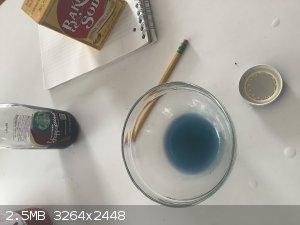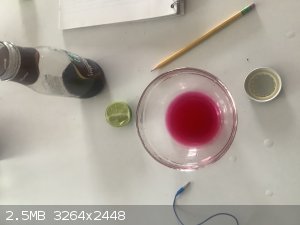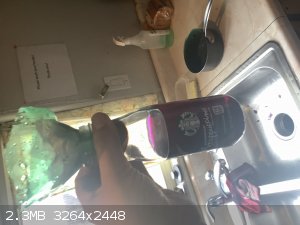
Yttrium2 - 20-5-2021 at 14:56
I just did this experiment and enjoyed it.
Take a look!
Questions: — Could this indicator be used to differentiate between a strong base’ and a weaker base?
I’m guessing there is more of a color change, my only chemicals were baking soda and lime juice (citric acid?)
I was really happy with the color changes, esp after adding the baking soda.
Can people do titrations with cabbage juice? It’s been a while…
What about get a rough ballpark number on the acidity scale based on color?
Additional info appreciated.

[Edited on 5/20/2021 by Yttrium2]



[Edited on 5/20/2021 by Yttrium2]

[Edited on 5/20/2021 by Yttrium2]
karlos³ - 20-5-2021 at 15:27
Your google's not working?
I literally searched for "can people do titrations with cabbage juice" and this was the first result: https://www.saltise.ca/wp-content/uploads/2020/07/SALTISE-Ch...
Vomaturge - 20-5-2021 at 16:06
Last time I tried this I got a chance to use it with baking soda, then a window cleaner with a little ammonia, then some calcium hydroxide. Baking
soda made it the pale blue you are showing. Ammonia turned it green, calcium hydroxide made it yellow if I recall? Not sure how it would do with a
truly powerful acid or base, like saturated solutions of HCl or KOH or whatever. It might permanently destroy it even once the pH was neutralized.
j_sum1 - 20-5-2021 at 18:29
Not all red cabbages are the same.
And, being a biological product, it goes off after a whole.
I believe it contains a mixture of indicator chemicals which is why there is such a good spectrum of colours. But the transition range is fairly wide,
which causes problems for some weak acid or weak base titrations. The same is true of natural indicators in general, eg, litmus.
But yes. It is a surprisingly rewarding exercise to work with cabbage juice. It is better than beet juice or blueberries.
clearly_not_atara - 20-5-2021 at 20:10
Actually, recently I had been tossing around the idea of titrating baking soda and lime juice to make trisodium citrate, and employing this in situ to
make homemade nacho cheese dip. Trisodium citrate is reportedly an effective emulsifier for melting cheeses.
Seems you're well ahead of me. The next step would be to add shredded cheese and heat on a steam bath (double boiler). 
Twospoons - 20-5-2021 at 20:12
For my daughters 7th birthday (a long time ago) we had a harry potter theme. Red cabbage was central to the "potions" class. The range of colours is
remarkable - the kids all thought it was great.
Keras - 20-5-2021 at 23:25
It works surprisingly well for family demo, but since it’s a mix of phenolic compounds, it has no real definite colour/pH function, which makes it
quite useless when you want to carry out precise titrations (unlike, say, phenolphthalein or iodine).
earpain - 21-5-2021 at 07:35
I make thick juice, dip filter paper in it, let them hang to dry, cut strips.
Indeed I use it when I don't need a precise reading, but just a ball park.
Some color changes are precise though. crossing over from 13 to 14 is distinct green to yellow. Crossing back down to neutral, 8 is blue, 7 is
purple, 6 red. Actually it's pretty good for bases, but all acids are reddish.
If i need to titrate or know for sure, i cut off a tiny piece of my universal indicator

